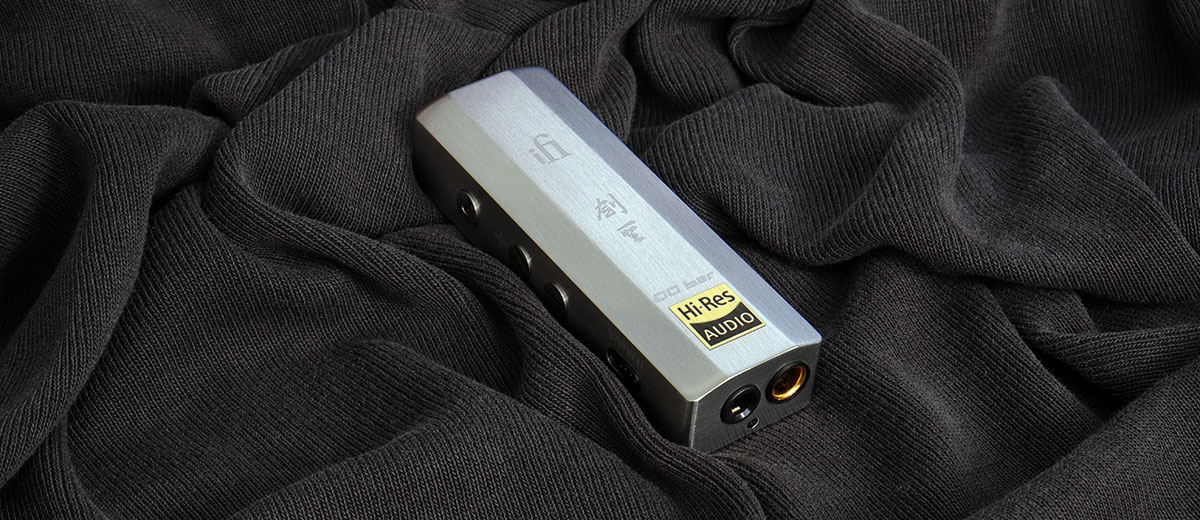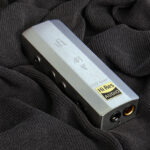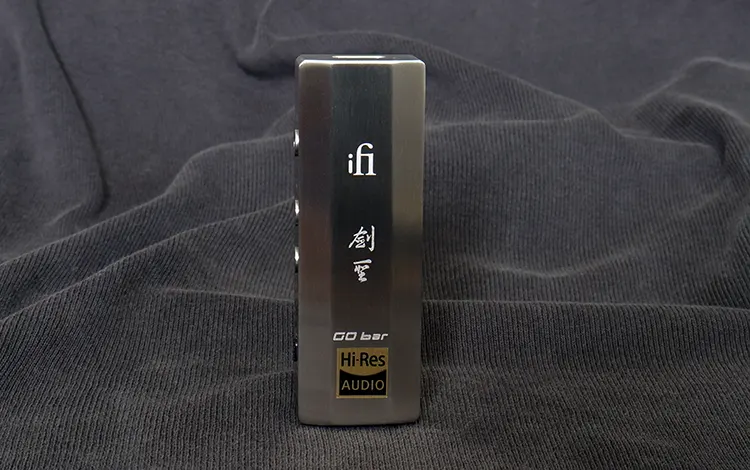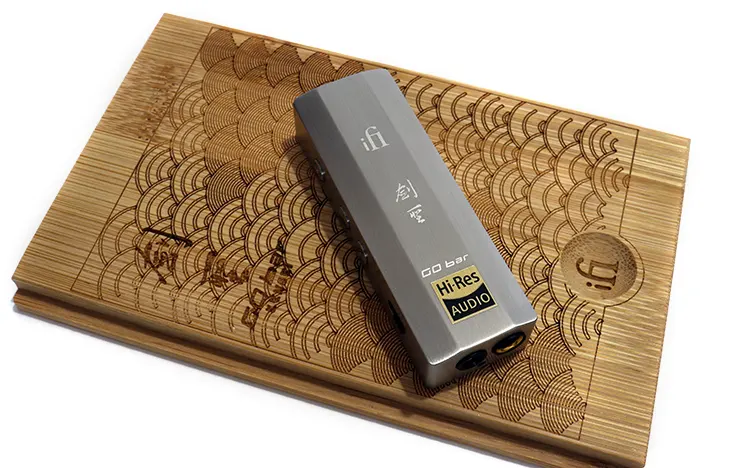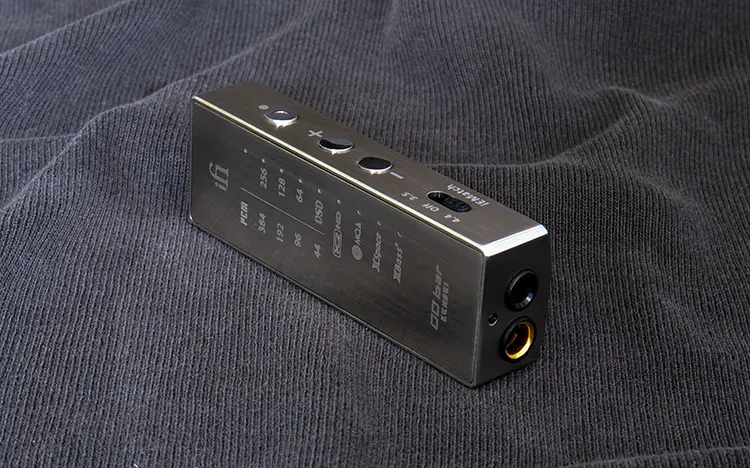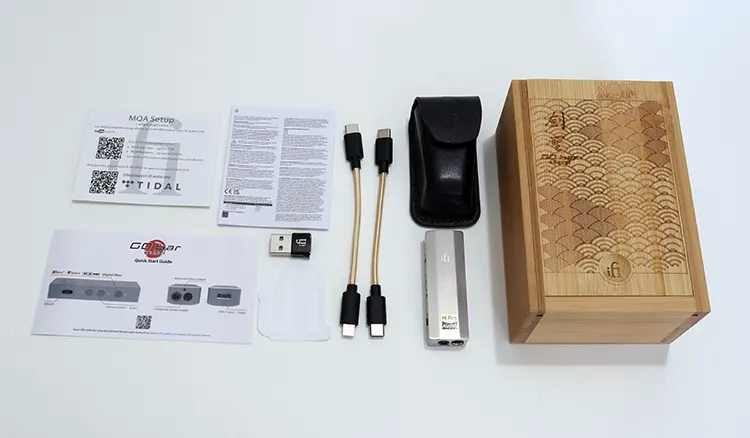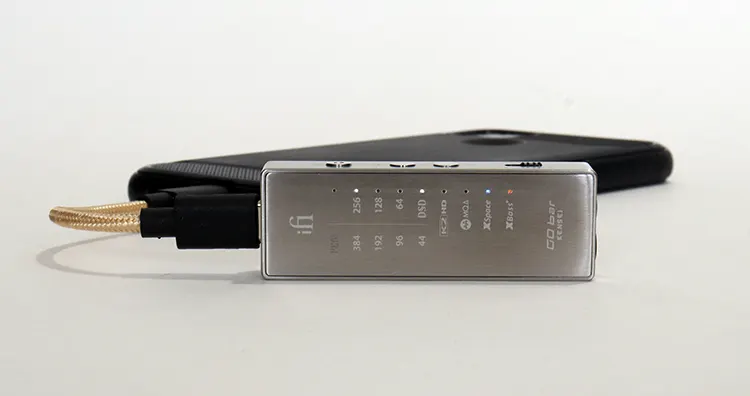Today, Louis reviews the $449 iFi Audio GO bar Kensei, which is a new generation dongle DAC featuring K2HD processing and up to 477mW of output power.
Disclaimer: I received this sample in exchange for our honest opinion. Headfonics is an independent website with no affiliate links or services. I thank iFi Audio for their support.
More information about iFi Audio products we have previously reviewed on Headfonics can be found here.
Please keep in mind that this post adheres to our most recent scoring guidelines, which you can find here.
When iFi Audio launched the original GO bar I immediately considered it one of the best dongle DAC models out there. I especially liked the GOLD Bar variant but its production was a limited run and unfortunately for many, they quickly went out of stock.
The iFi Audio GOLD Bar had a beefier power circuit section employing larger capacitors and made a notable sonic difference. It gave the GOLD Bar dongle a cleaner sonic presentation and a darker background.
The $449 GO bar Kensei from iFi Audio solves the GOLD Bar scarcity issue and gives us what is essentially the GOLD Bar but with a new finish, (minus the gold).
To make things more interesting, they also added a very novel but highly effective feature called K2HD Or K2 High Definition.
I can tell you now, from my testing and comparisons, that feature might make the GO bar Kensei one of the best dongle DACs I have reviewed to date.
Features
The usual suspects are at play here and the list of internal components inside the GO bar Kensei hasn’t changed much.
There’s the XMOS microcontroller, a Cirrus Logic DAC section, a GMT clock, four digital filters, and popular iFi Audio exclusive features like iEMatch, Xbass, and XSpace, all within a dongle-sized shell.
To have all these features within a dongle-sized device sounds interesting, to say the least. The cherry on top is the new sonic improvement feature called K2HD or simply K2 that claims to restore the natural harmonics of the original recording.
K2HD Or K2 High Definition is an audio technology invented by JVC Kenwood Victor Entertainment Corporation and re-introduced with improvements under an 18-month collaboration exclusively for the Kensei dongle DAC.
Jitter eradication is another claimed improvement on the Kensei over the previous two models. This combined with the above should allow one to say that this dongle is iFi’s best up-to-date, sonically, and on paper.
Decoding
The iFi Audio GO bar is capable of decoding up to DSD256, natively 2x DXD, and PCM 32bit/384kHz. It can also manage native MQA rendering and MQA studio files.
The USB input is handled by the 16-core XMOS but the Kensei also uses iFi’s often-implemented GMT precision clock system to keep everything in sync but this time around it’s been enhanced.
Alongside the DAC implementation, you can choose one of four digital filters to further tailor the DAC section output. There’s a Bit Perfect mode, a minimum phase mode, a standard mode, and the Gibbs Transient Optimized filter.
It’s certainly a stable DAC section and I did manage to put it through some hard work to see if the DAC section would crack up, or produce artifacts, and playback was solid all the time. This dongle cuts through digital files like a hot butter knife.
Design
The iFi Audio GO bar Kensei feels substantial in the hand since it’s made from a solid piece of steel. The weight is probably the only negative aspect that we can touch upon here. The overall shape assimilates a mini Bullion bar and the heft is accordingly similar.
The shell is made from Japanese brushed stainless steel and the unit is a looker. However, it’s a smudge magnet. It’s easy to keep clean and I suggest using a micro cloth for this task. I would never use anything abrasive to clean this shell.
The front side is simple and carries the iFi Audio logo, the GO bar logo and a Japanese phrase etched into the metal. It’s a subtle design but not a photogenic one since photos don’t do it justice.
On the back of the unit, there are more LEDs than any other dongle DAC I’ve seen. A total of nine LEDs indicate everything from the bitrate and format to Xbass, Xspace, and K2 status. They also help in choosing one of the four digital filters.
I/O
The iFi Audio GO bar Kensei XMOS section accepts a common USB-C input and a vast amount of gear will pair and produce music including a Windows PC, Apple gear, and a Chromebook.
However, there’s a small caveat in that when you use an iPhone, it might not operate if the battery hits 30% or below. This dongle is heavy on battery consumption.
The GO bar Kensei also supports UAC1 allowing it to be used as an audio gaming USB-DAC with the likes of the PS5.
The other end of the device includes two separate headphone output ports consisting of a single-ended 3.5mm port and a balanced 4.4mm output. I would not recommend using both ports simultaneously. The dongle does run hot and I would imagine even more so driving a double load.
All the connectivity is arranged commonly in that USB port and the headphone outputs are placed on either end of the dongle. Controls are placed on one side of the dongle.
The two-volume control buttons can be pushed in simultaneously to engage the turbo mode which is a 6 decibel gain setting. That’s a side dish to the iEMatch feature.
Controls
The GO bar Kensei has dual onboard volume control buttons but also has a separate multifunction button that does most of the work when you want to access some of the hardware-embedded features.
A quick press toggles on and off the Xbass and Xspace features. A three-second press gives access to the four digital filter options. With a three-second press in conjunction with the volume plus button, you can activate the K2HD feature.
A long press of eight seconds activates or deactivates the volume synchronization in case you’re like me and like to control the volume from within the Windows system on a device of this kind. I appreciate iFi dropping this feature into the Kensei and have been asking for it for a while.
The GO bar Kensei doesn’t come with an accompanying app but to be honest, in this case, it’s not needed since there are plenty of accessible onboard features that are hard-wired into the unit itself. This dongle has lots of sound-shaping features that are subtle, but some of the best I’ve used.
Packaging and Accessories
The outer package is the typical iFi fully-laminated thin cardboard box but this time you’ll find something interesting within that box. It’s another box. Allow me to elaborate.
This secondary box is made from bamboo and has a slide-out top plus it’s beautifully engraved upfront. This storage medium is on another level compared to all other dongles I’ve received.
There is another type of storage medium included but this one is a black thick leather gun holster type and is custom-made for the GO bar Kensei. It includes a belt loop and openings where you need them.
iFi Audio also includes two types of cables. One terminates in dual type C connectors and one switches a USB for a Lightning connector. Plus, there is a USB-C to full-sized USB type A adapter also included inside the box. The rest of the inclusions are literature-related.
Sound Impressions
The following sound impressions were created using the HIFIMAN Sundara the HE400se planar headphones and the SIVGA SV023 dynamic driver headphones.
Summary
The iFi Audio GO bar Kensei has a forward character and seems to have an internal gain set rather high.
This is also a factor in the high amount of detail this device can produce. A lot of micro detail is delivered from this dongle DAC and amazingly, it does this while keeping the background silent.
Bass response and presentation are ample since there’s plenty of power on tap. The midrange is smooth and evenly distributed, and the high frequencies seem controlled with a small drop in output giving this dongle DAC a warm character overall.
The iFi Audio GO bar Kensei produces sound with a completely dark background. There is a transparency level here that most dongles are incapable of, particularly compared to yesteryear’s models.
One aspect that I find astounding about the iFi Audio GO bar Kensei is that, unlike other sound-altering implementations that ruin the overall sonic presentation, I like the sound with all of them engaged. That includes the Xbass, the Xspace, and the K2 feature. The three together are quite addicting.
K2HD effect
My initial impression of the K2 implementation is that it makes the end product sound natural, gives the overall sound signature a hint of clarity, and it also produces improvement in focus within the soundstage. It also restores harmonics.
The bass response loses its shyness and is produced with an increase in clarification and presence. The mids are brought forth and the treble also gains some presence over stock. Some of the fundamental sentiment is also restored.
The overall stage becomes energized and the timbre becomes congenital. The overall feeling I get is that it seems as if another layer of sound is added which is equal to the original extraction. This implementation works well in extracting detail from Classic Rock recordings, for example.
The overall character you get is an assimilated analog-like presentation that assimilates an older vintage sound, albeit an excellent translation of one and it veers away from sterility.
The result is a presentation that seems closer to the original in the sense that tracks now have a new element that makes everything sound as one remembers it should have.
Staging and Dynamics
The iFi Audio GO bar Kensei has a big attitude and it thinks it’s a full-sized desktop model performance-wise. It portrays a large panorama of sound and it can also produce a kick and a big wallop when it has to.
It’s a potent dongle and presents the listener with a sound signature that has a peppy character. It’s a dongle that is not shy to show off and demonstrate its capability of properly energizing many headphones out there.
It also brings forth the best staging capabilities of the headphones or IEM you’re using. When you engage the Xspace in conjunction with the K2 the overall scope becomes even further expanded but nothing seems to lose focus and spotlight. The effects are subtle but tastefully done.
Click on page 2 below for my recommended pairings and selected comparisons.

